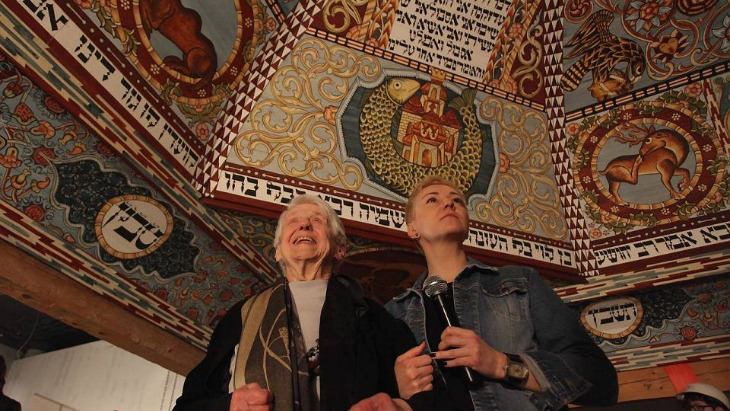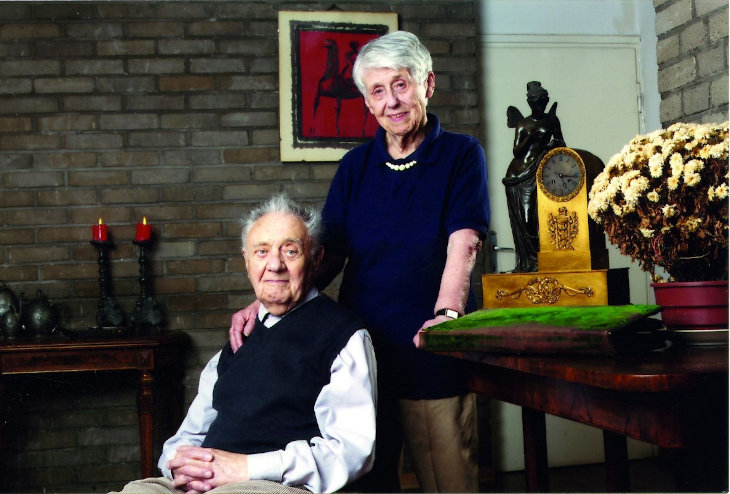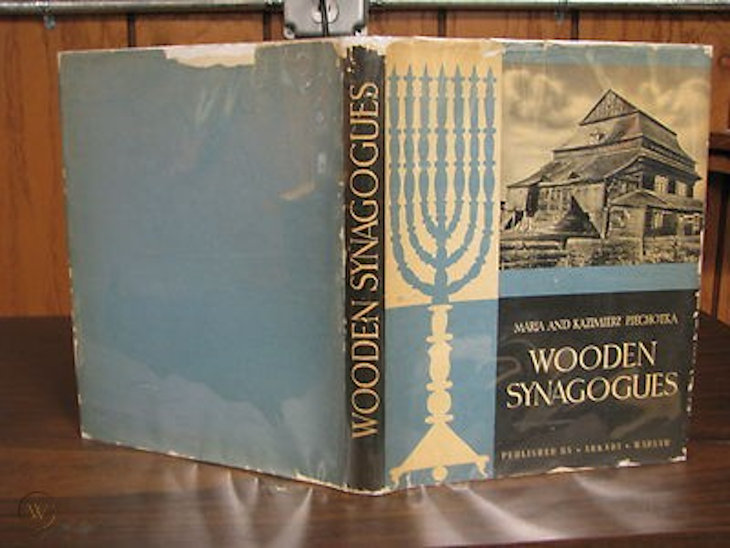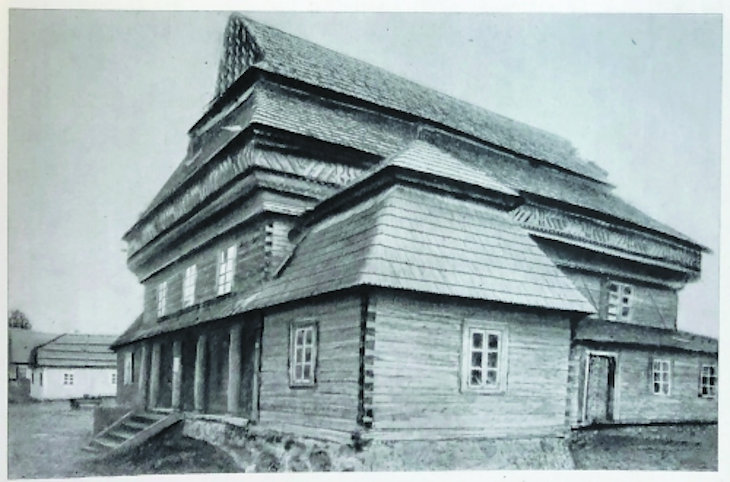 Vampire Weekend's Surprising Jewish Stories
Vampire Weekend's Surprising Jewish Stories


4 min read
A tribute to the faithful, professional and humble work of the non-Jewish archivist couple.
The penchant of Polish Jews before the Holocaust to build their synagogues out of wood lent them great beauty and holiness – and made them easy prey for the fiery evil of the Nazis as they set out to destroy every vestige of Judaism. What could make their arson easier than synagogues made out of wood?
One does not know, least of all the artists themselves, whether those who set out to record the images of pre-Holocaust Jewish Poland were possessed by some level of prophecy. Most well-known is the photography of Roman Vishniac, who took thousands of photos, some of them now painfully iconic images, of Jews of all ages, occupations and economic strata. Less well-known is Maria Piechotka, who died Nov. 28, 2020, in Warsaw.
If not for her and her husband Kazimierz Piechotka, our knowledge of the beautiful wooden synagogues of Poland and Ukraine from the 16th century on would be solely what the imagination might provide. Thanks to their research across the cities and hamlets of Poland in the 1930s, we have images, exacting images, of these synagogues. Each one bodies forth a parallel: a photo of the synagogue and alongside it an imagined image of the evil men of Germany who torched and reduced it to ashes. To see the photos of these synagogues and to think of their ultimate fate is unavoidable and infinitely painful.
 Maria and Kazimierz Piechotka
Maria and Kazimierz Piechotka
JTA informs us that the Piechotkas, who were not Jewish, carried on the documentation of synagogue architecture launched earlier by Jewish colleagues at the Warsaw Institute of Technology, including Oskar Sosnowski and Szymon Zajczyk. Both perished in the Holocaust. The Piechotkas fought in the resistance during the Holocaust.

In 1957, the Piechotkas published Wooden Synagogues in Polish and in 1959 in English. It is a very rare book, unavailable on eBay, with very few copies listed on Amazon. The Intermountain Jewish News noticed this book for sale in 1972 and grabbed it. It feels holy.
The book is more than images, though they alone would justify it. The book includes a modestly titled “Description of Objects,” 113 bibliography entries, a map of the location of wooden synagogues in Poland and a history of Polish Jewry with special reference to the architecture of its Jewish quarters. The opening sentence of the introduction to the English edition of Wooden Synagogues, by Dr. Stephen S. Kayser, reads: “This book commemorates martyred buildings… they deserve to be remembered like the six million human beings who perished with them… – and who to a considerable extent were a part of them.”
 Jedwabne, Poland pre-war synagogue
Jedwabne, Poland pre-war synagogue
The synagogue above, originally built in 1770, later enlarged, is described in fine architectural detail. We offer a brief sample: “The main building was covered by a multi-tiered hipped roof (each tier with a different pitch), resting on a large concave cornice. A high, ornamental frieze as well as the curve of the middle tier indicate the existence of a dwarf wall. The side annexes for women had lean-to roofs. The bay of the south wall corresponding to the man hall showed traces of three small two-slope roofs intersecting the walls of the main hall.”
One thing the striking black-and-white photos and schemata in Wooden Synagogues do not capture is the elaborate murals painted inside. Jewish art was synagogue art, and it flourished; helping, along with the architecture, to create the allure and warmth of the prayer space.
The rare surviving pictures of a wooden synagogue together with its surrounding buildings show the love lavished on the synagogues, as the other buildings appear barely inhabitable, evidence of the extreme poverty of the times. These Jews, who lived in dire poverty, found a way to make their synagogues shine.
 Re-creation of the Gwozdziec Synagogue’s roof
Re-creation of the Gwozdziec Synagogue’s roof
JTA informs us that a hand-built, nearly full-scale re-creation of the Gwozdziec Synagogue’s timber roof, its painted cupola and a hand-carved wooden bimah are the centerpiece of the core exhibit at the Polin Museum of the History of Polish Jews in Warsaw.
All this is a legacy of the faithful, professional and humble work of the Piechotkas. In 2016, Maria Piechotka was awarded the Irena Sendler Memorial Award, named after another humble Warsaw non-Jew, who risked her life time and again to save Jewish lives during the Holocaust.
Maria Piechotka said of her work in a documentary, “Raise the Roof”: “We knew that if we didn’t capture this at this given instant, if, God forbid, these materials would be damaged, then a huge piece of culture, European culture, world culture, would be completely forgotten.”
Our debt to the Piechotkas is like the Jewish religious, cultural and historical heritage they preserved: incalculable.
This article originally appeared in the Intermountian Jewish News, based in Denver, Colorado.
